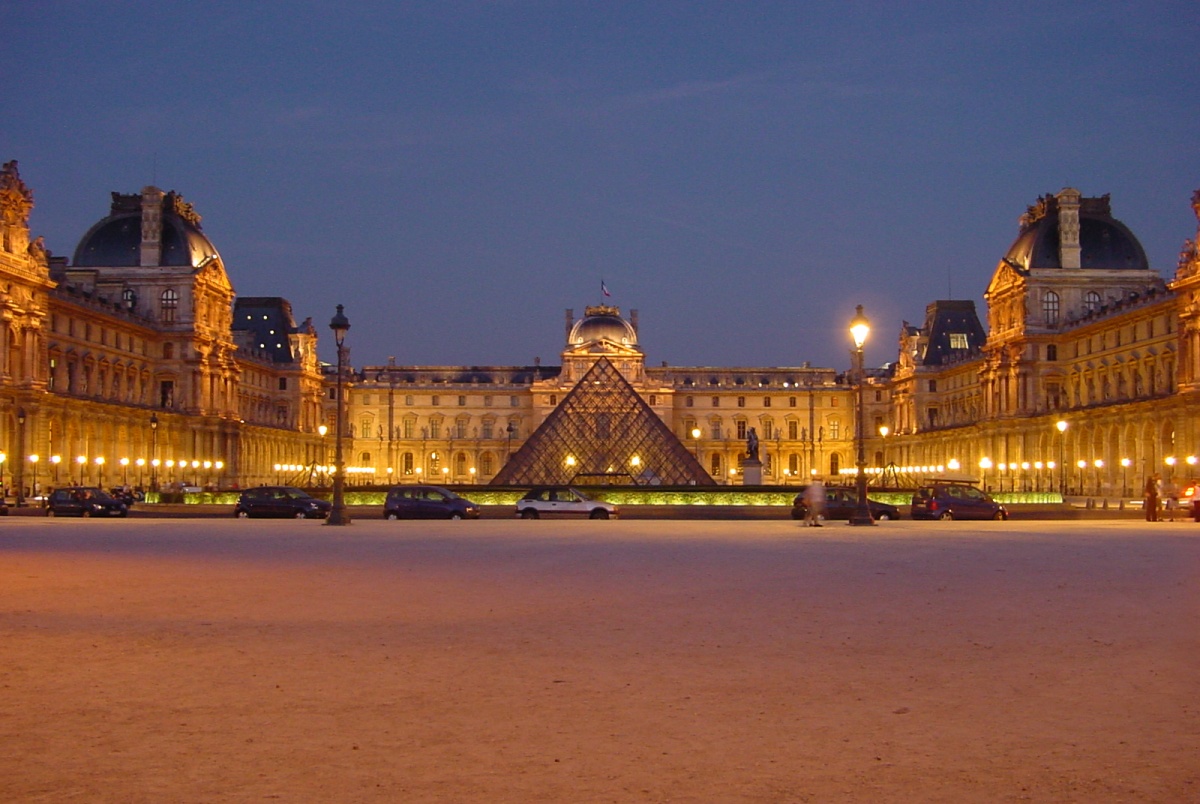
8.5 million visitors in 2008. 35,000 objects of art. 60,600 square meters. Can you guess what I’m talking about? Of course, because you’re a foreigner! The Louvre has the simultaneous ability to attract and repel, with its size, importance, and reputation as a tourist trap.
Still, the Louvre was not what it is today. First, the history of the building itself. Built in the 12th century by Philippe II, le Palais du Louvre was originally intended to be a French fortress. Some of the remnants of the original building still exist, but most of the building has been altered through the ages. But it was the French revolution that transformed the Louvre into a public museum. On August 1793, the doors of the Louvre were opened to the public, and free entry was granted three times a week. In the early days, artists lived in residence, paintings were hung without labels, and the organization of the building was debated.
Today, the building has changed. The large glass Louvre pyramid designed by I. M. Pei presents a juxtaposition of old and new architecture. The galleries are immense, well organized, and well-curated. Admission is not free – except for a specific day of the month. The French government owns the Louvre, but since the 1990s it has become more independent. Tons of tourists visit the Louvre each year.
But what I found more interesting is my own conception of the Louvre that has changed. I first visited the Louvre when I was 8, on a class field trip. What I remember and what I keep dear to me, was my own fascination with art. I also thought the building was just another large, belle-époque institution that held art inside. As a French élève, I took for granted that my admission would be free.
Now, returning to the Louvre as a Stanford student studying art history, I feel that my conception of the Louvre has changed. I disdain the Asian tourists that take massive amounts of photos of pictures that they have not learned the history of. I detest the large crowds that cluster around famous pictures. I consider the Louvre as a tourist trap that is over-rated and over-visited. For me, there is less of an attraction.
But I can understand how others can find the Louvre such a seductive museum. Walking around the exhibits, I overheard a telling conversation in English. “Wow! Look at that painting! It’s Napoleon 1er!” Others maintain a fascination with the history that the paintings represent; the Louvre and Paris are two ideas so inextricably intertwined. To get at the heart of the matter, the Louvre is something uniquely French that defines Paris. One would not be able to go to another museum in the world and have the same satisfying feeling of saying that “I went to the Louvre and saw the Mona Lisa.”
This experience of visiting the Louvre buys into the mystique of Paris and the idea of consumption of this experience. The museum medium facilitates politically-driven exchanges of culture and ideas between the objects that it houses and museum-goers. Museum goers go in, look at artwork, take pictures, buy replicas of art work in gift shop, and leave. Bien sûr, materiality is intimately linked to this phenomena. Despite the fact that museum goers cannot touch the objects themselves, they consume them them in the way that they can – with videocameras, cameras, and gift-shop replicas.
Perhaps that is what bothers me the most about the Louvre – that I believe that most museum goers go to the Louvre to consume and not to experience the art to be inspired. But my negative impression does not detract from my own fascination with the Louvre in its massive, touristy glory.
No comments:
Post a Comment